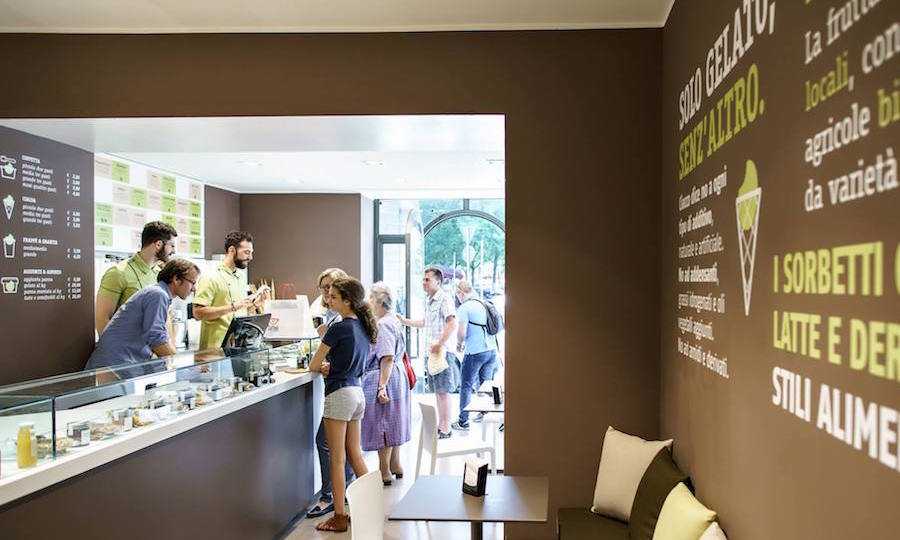Chains, of either the direct or franchise kind, have become an integral part of the Italian ice-cream scene. They guarantee a uniform format, with recipes and preparation processes that can be replicated but which are the result of careful research work.
They give visibility to well-known brands, or they join forces with other gourmet concerns in order to obtain visibility.
One such case is Lait Gelateria Alpina, which operates in partnership with Eataly and distinguishes itself in two ways: it uses high-quality mountain milk from the Cuneo valleys and makes the ice cream before the eyes of customers “so that they can see how good gelato is made, and can enjoy it at its freshest and at the best temperature,” explains Gelait CEO Gigi Terzolo.
“The Grom experience has taught us that there is a section of the consumer public that is prepared to spend more for a more natural kind of ice cream. This has prompted others to follow suit.
We can say that gelato is a bit cleaner than it was a few years ago. In terms of flavour and creaminess, the vast majority of ice cream parlours serve ice cream of a barely acceptable standard, because most of those working there are not very skilled. And many of these places still use powdered milk, chemical flavourings, colouring agents and hydrogenated vegetable fat.”
Amorino is a concern that was started up in Paris in 2002 by two Italians, Cristiano Sereni and Paolo Benassi, and arrived in Italy six years ago. Its production is in a location near Paris, for all establishments: the gelato is chilled to -24°C and brought back up to -13°C at the point of sale.
“Consumers changed before gelato did. Over the past few years they became more attentive to what they were eating and the quality of the ingredients used,” says Paolo Benassi from Paris.
“And supply followed demand. We use organic ingredients and locally-sourced produce, and we offer products such as vegan sorbets. If you want to sell gelato it has to be good, so we work incessantly on quality and bring out a new flavour every month to stimulate demand.
Our centralised production and large volumes enable us to use only the very best ingredients, which a small-scale concern wouldn’t be able to afford.”
We have over 100 points of sale, where we also have a tea room and serve coffee, as well as offering macarons, crepes, gaufres (waffles) and pastries. “The range is the same everywhere, from Italy to Korea: the only thing that changes is the weighting given to certain products over others.”
As well as focusing on naturalness, Ciacco, an ice-cream chain created in Parma and now also present in Milan and Bergamo, stands out for its extensive technological knowledge of processes.
“Simply having the very best ingredients is not enough to make a great gelato,” says its founder Stefano Guizzetti.
“There are other factors besides flavour that give structure and creaminess. My research, which began with my degree dissertation, has been into how to create a gelato without using thickeners and other additives, but which still has the same structure, body and perceived flavour.
We use ingredients that favour biodiversity, using ancient varieties of grains, pears, apples and pumpkin. 50% of the products we sell are vegan, and we don’t only offer fruit flavours. We also work with alternative sugars like rice syrup, malt, agave and grape juice, and a coconut sugar extracted from the flowers.”
One particular feature is its themed evenings combined with other foods, with aperitif sessions that offer gelato (including the savoury kind) as a finger food, alongside ham and cheese and washed down with wine or beer, with emphasis placed on the contrasts between cold and hot.
So where does gelato go from here? “We have been experimenting with a liquid nitrogen technique, which is a good option in the gourmet catering sector because it results in a silkier texture, but would not be easy to achieve in ordinary ice-cream parlours.
It has to be produced and eaten straightaway, otherwise it loses its special qualities. And then we are also working with Parma University on what we call the functional gelato.
This involves mixing in elements that help the body to function better, in very small doses so as not to alter the flavour.”


















